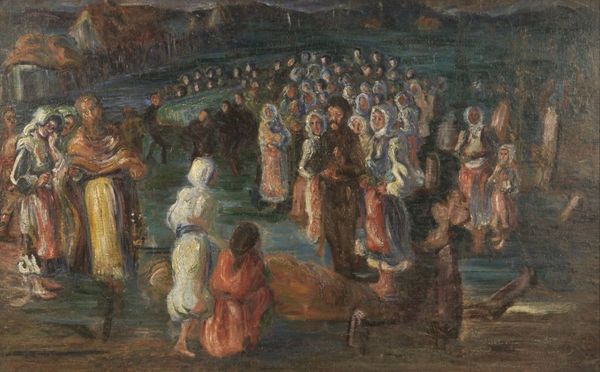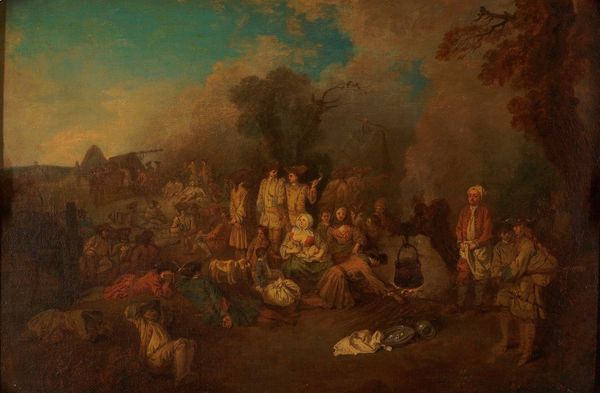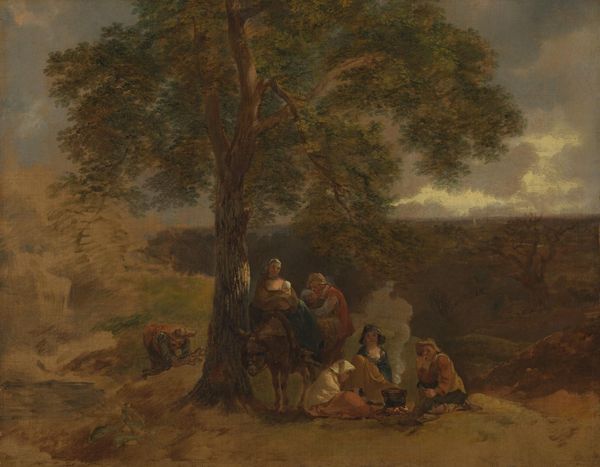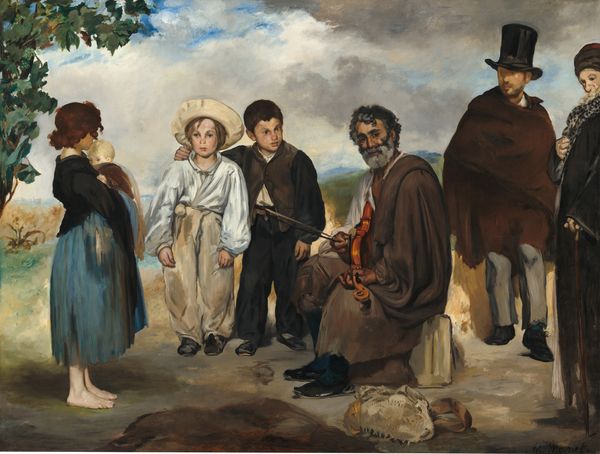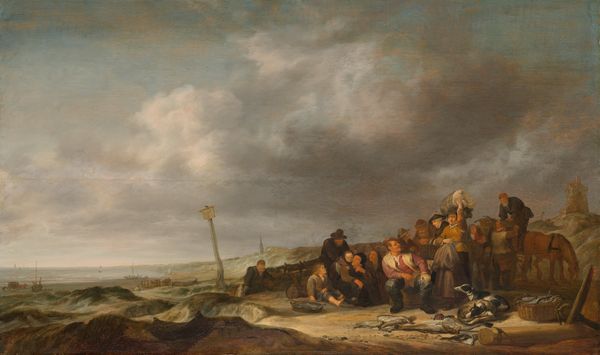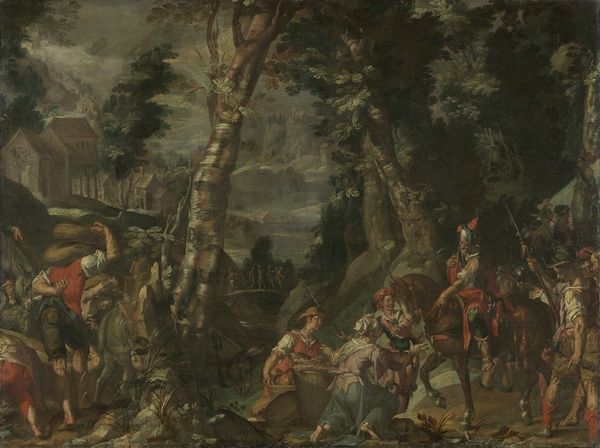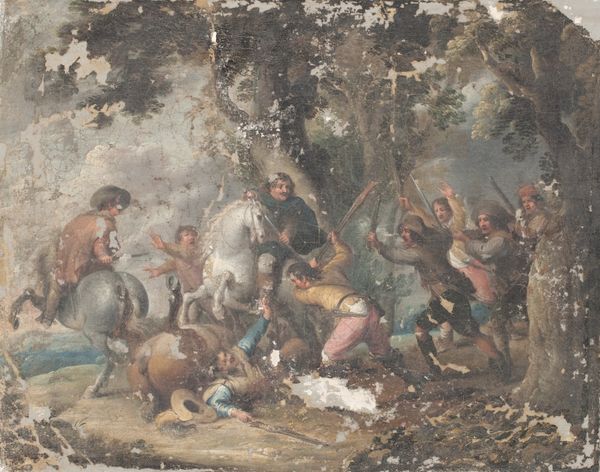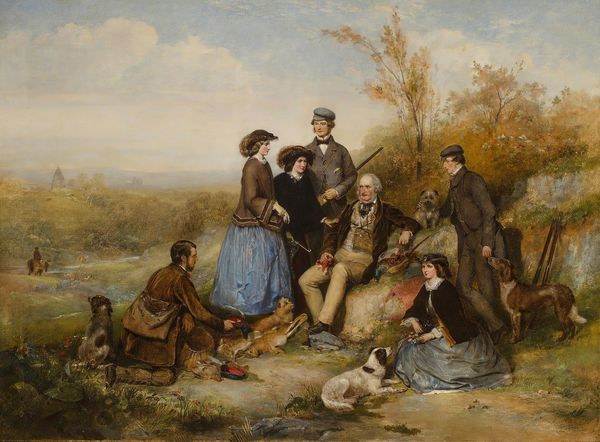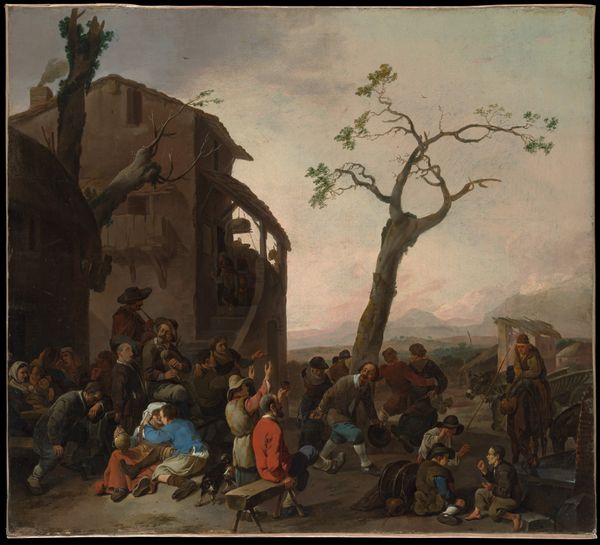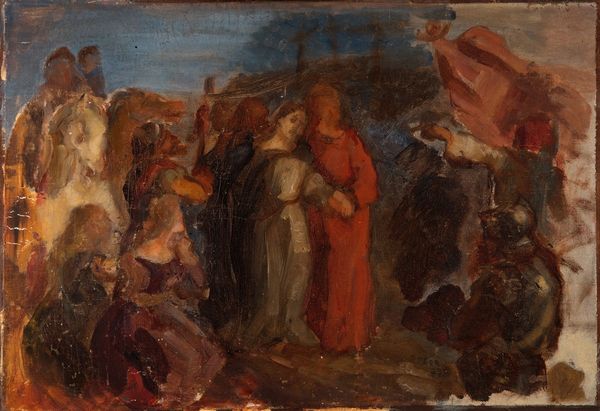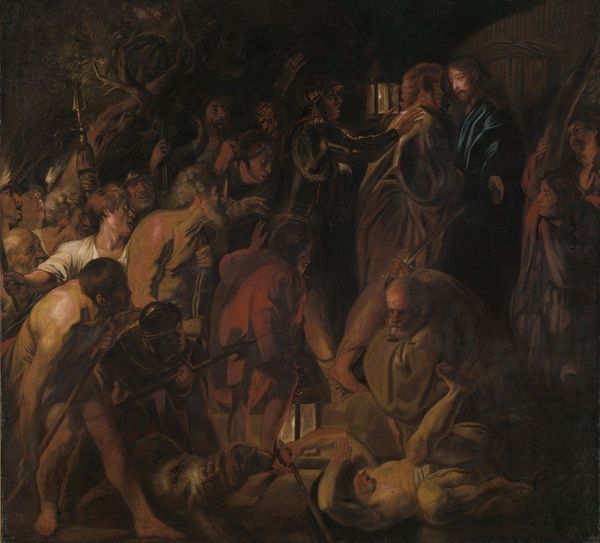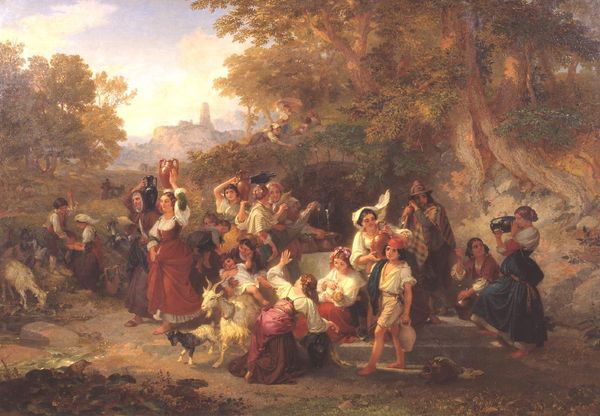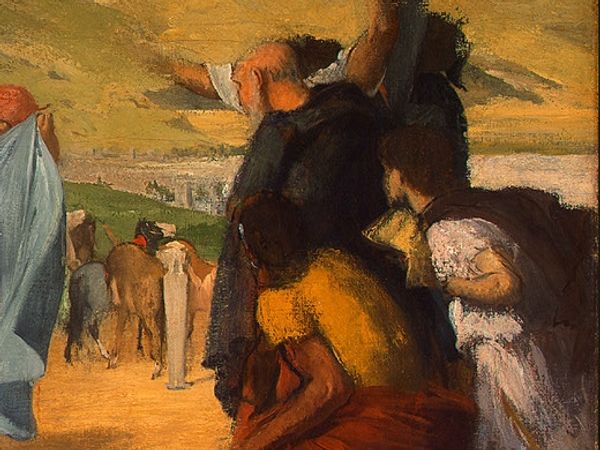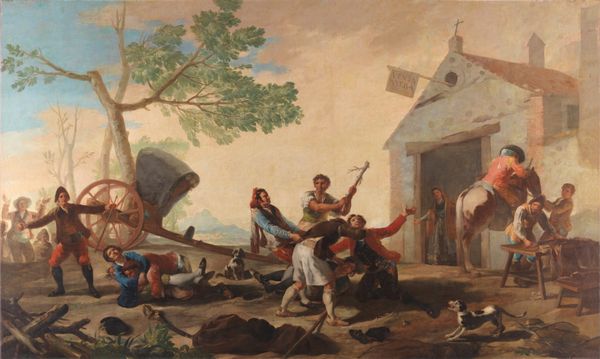
Dimensions: unconfirmed: 2450 x 1840 mm
Copyright: © The estate of Robin Guthrie | CC-BY-NC-ND 4.0 DEED, Photo: Tate
Curator: Robin Guthrie’s ‘Sermon on the Mount,’ now in the Tate collection, presents us with a modern take on this biblical scene, painted in a deliberately rough style. Editor: It has this incredibly somber mood, doesn't it? The muted palette, the figures almost blending into the landscape… it feels less like a celebration of faith and more like a reflection on its burdens. Curator: The symbols employed here are particularly striking. The assembly of figures—the children, the working class, the bourgeois onlookers—each represent a different facet of society seeking solace or guidance. Guthrie offers this in a modern era where faith’s role had to change. Editor: Absolutely, and it's hard to ignore the gendered dynamic in the painting. The female figure delivering the sermon, framed against the natural backdrop, directly challenges the traditional patriarchal structures that have historically dominated religious teachings. Curator: Indeed, it makes us consider new interpretations of spiritual authority and societal reform. Editor: It invites dialogue about who has the right to interpret and disseminate religious narratives. Curator: It’s a powerful, thought-provoking piece. Editor: Yes, it leaves you with a sense of urgency and a call for social justice.
Comments
tate 6 months ago
⋮
http://www.tate.org.uk/art/artworks/guthrie-sermon-on-the-mount-t06770
Join the conversation
Join millions of artists and users on Artera today and experience the ultimate creative platform.
tate 6 months ago
⋮
Robin Guthrie entered the Slade School of Art in 1918 with the financial assistance of his patron, the collector Jakob de Graaf. His skilful draughtsmanship brought him to the attention of Henry Tonks (1862-1937), the school's principal, and in the summer of 1920 his painting Pastoral Scene with Figures (Slade School Collection) won first prize for composition. Guthrie completed his studies in the summer of 1922 and took a studio in a church hall on Parkhill Road, Hampstead, London, with his fellow student and friend Rodney Burn (1899-1984). Sermon on the Mount was painted during these months, either just before he left the Slade or just after. Although the depiction of religious and mythological subjects was encouraged at the Slade, Sermon on the Mount should be considered in relation to Jacob Epstein's Risen Christ 1919 (Scottish National Gallery of Modern Art) and within the wider proliferation of such imagery after the First World War (1914-8). The subject of the painting is Christ's sermon to the faithful, as recounted in chapters five to seven of St Matthew's Gospel. Having been among the crowds, where He had healed the sick, Christ withdrew with His followers to a mountain near the Sea of Galilee, shown in the background. The sermon He gave expounds the central ethics of Christianity and represents a development of the Mosaic Law, which had been passed down by God at Mount Sinai to the Israelites. In the painting there seem to be several references to events leading upto the sermon and to the text of the sermon itself. The girl holding her crutches and the man unwrapping his bandages represent the sick he had healed before going up to the mount; the house on the beach and the one on top of the hill may represent the parable of the builders, Therefore whosoever heareth these sayings of mine and doeth them, I will liken him unto a wise man, which built his house upon a rock: and the rain descended, and the flood came, and the winds blew, and beat upon that house, and it fell not; for it was founded upon a rock. And every one that heareth these sayings of mine and doeth them not shall be likened unto a foolish man, which built his house upon the sand; and the rain descended, and the floods came and the winds blew, and beat upon that house, and it fell; and great was the fall of it' (St Matthew, chapter 7, verses 24-7) In the painting, all the figures,except Christ, wear contemporary clothing, perhaps indicating the continued relevance of Christianity to the modern world, particularly in the aftermath of the First World War (1914-18). In this context, the olive tree, in the centre of the picture, may be read as a symbol of peace. The figure of Christ is almost certainly a self portrait and the seated figure underneath the tree is probably the artist Thomas Monnington (1902-76), a contemporary at the Slade. As yet the other figures in the painting have not been identified, though it seems likely that they were friends or colleagues of Guthrie's. Further reading:A Centenary Exhibition: The Slade 1871-1971, exhibition catalogue, Royal Academy of Arts, London 1971 Toby TrevesSeptember 2001
